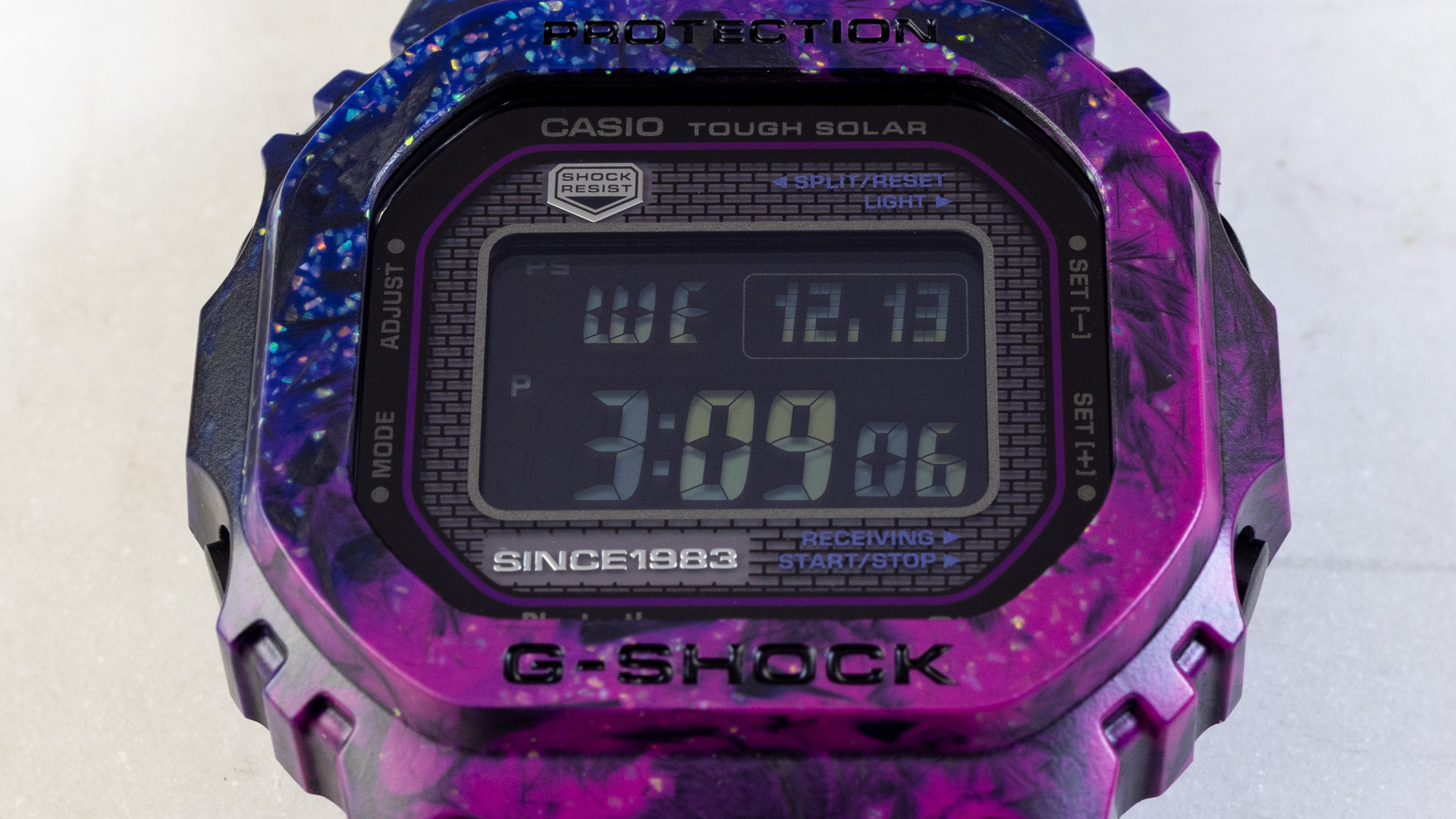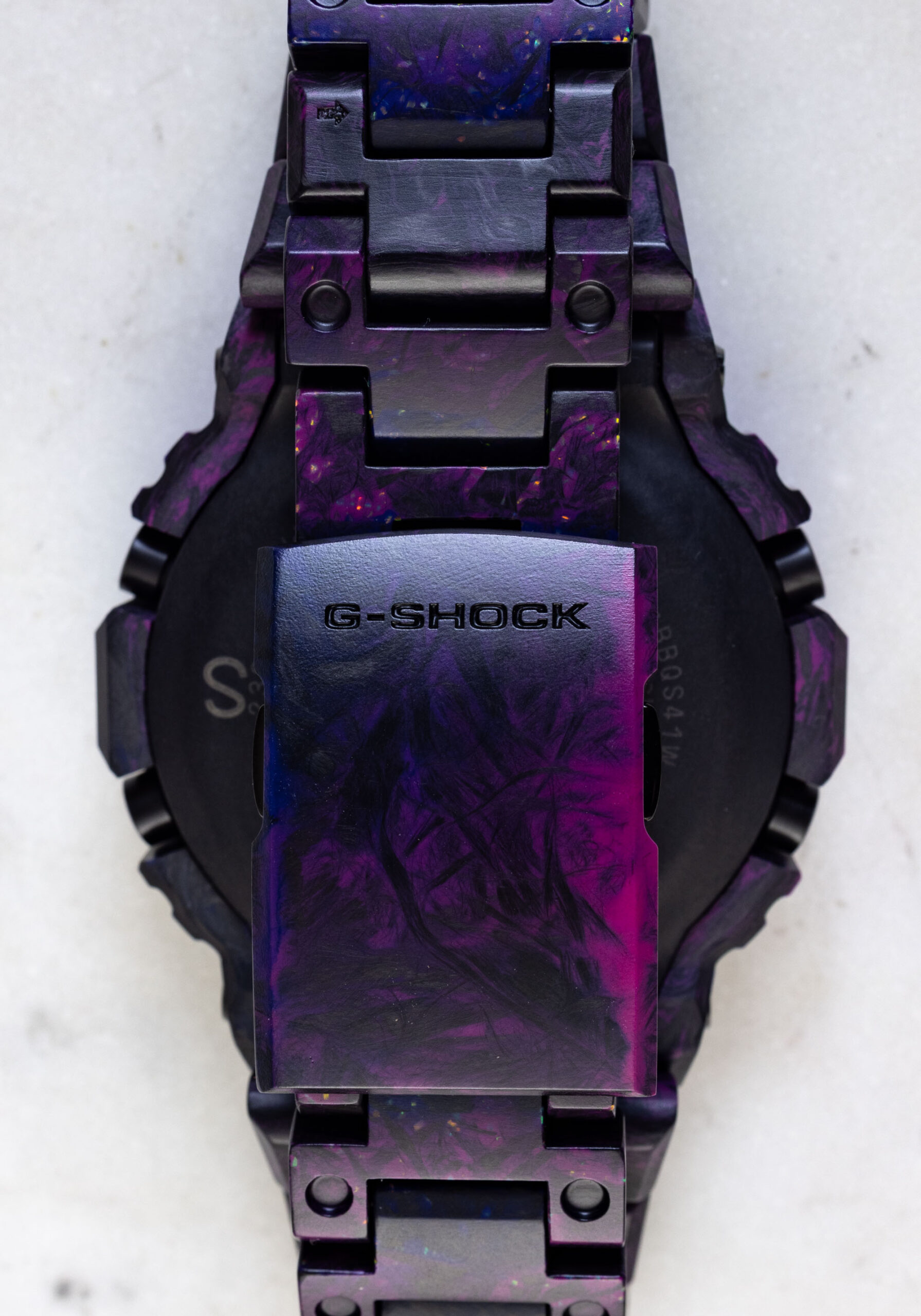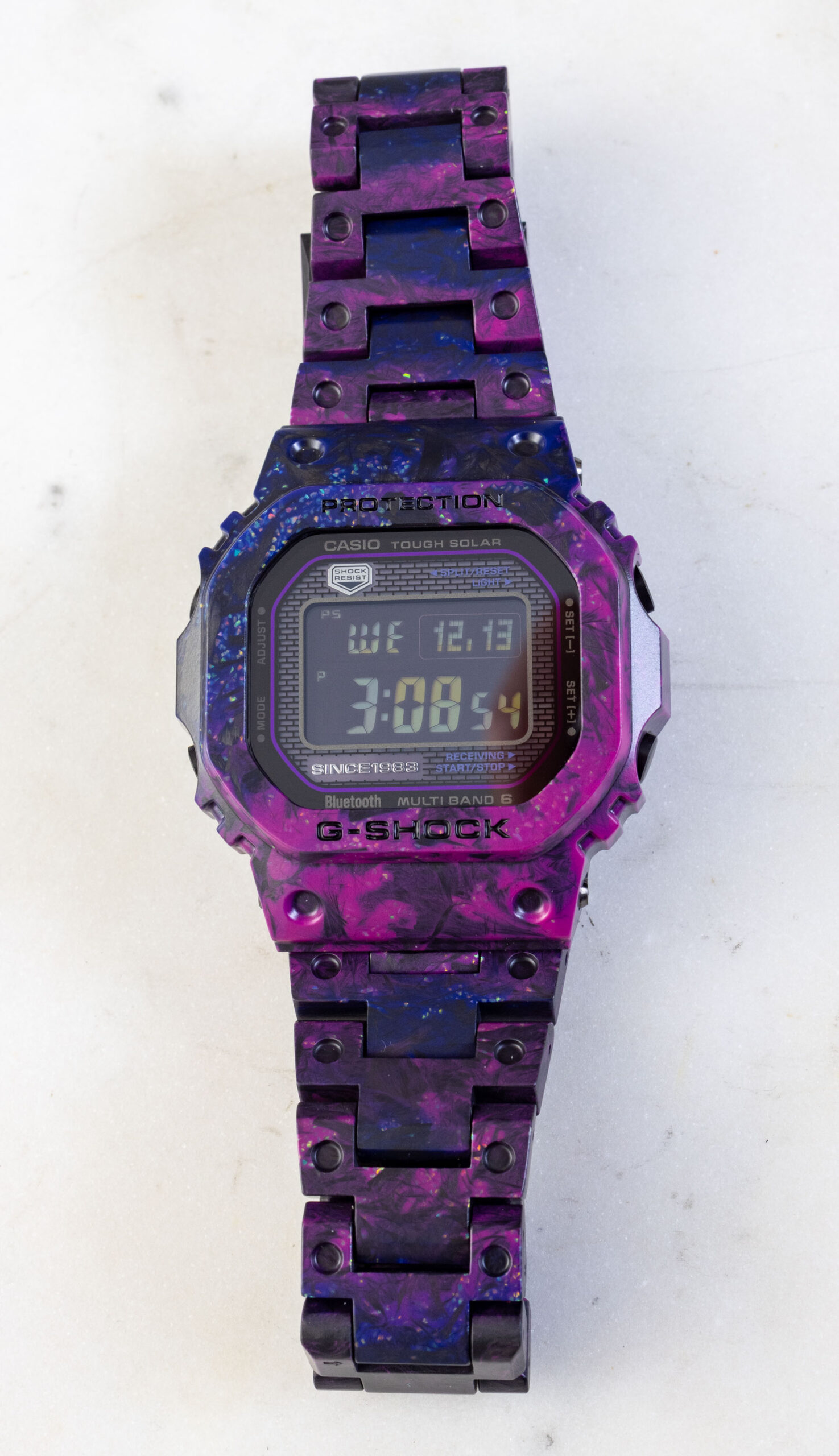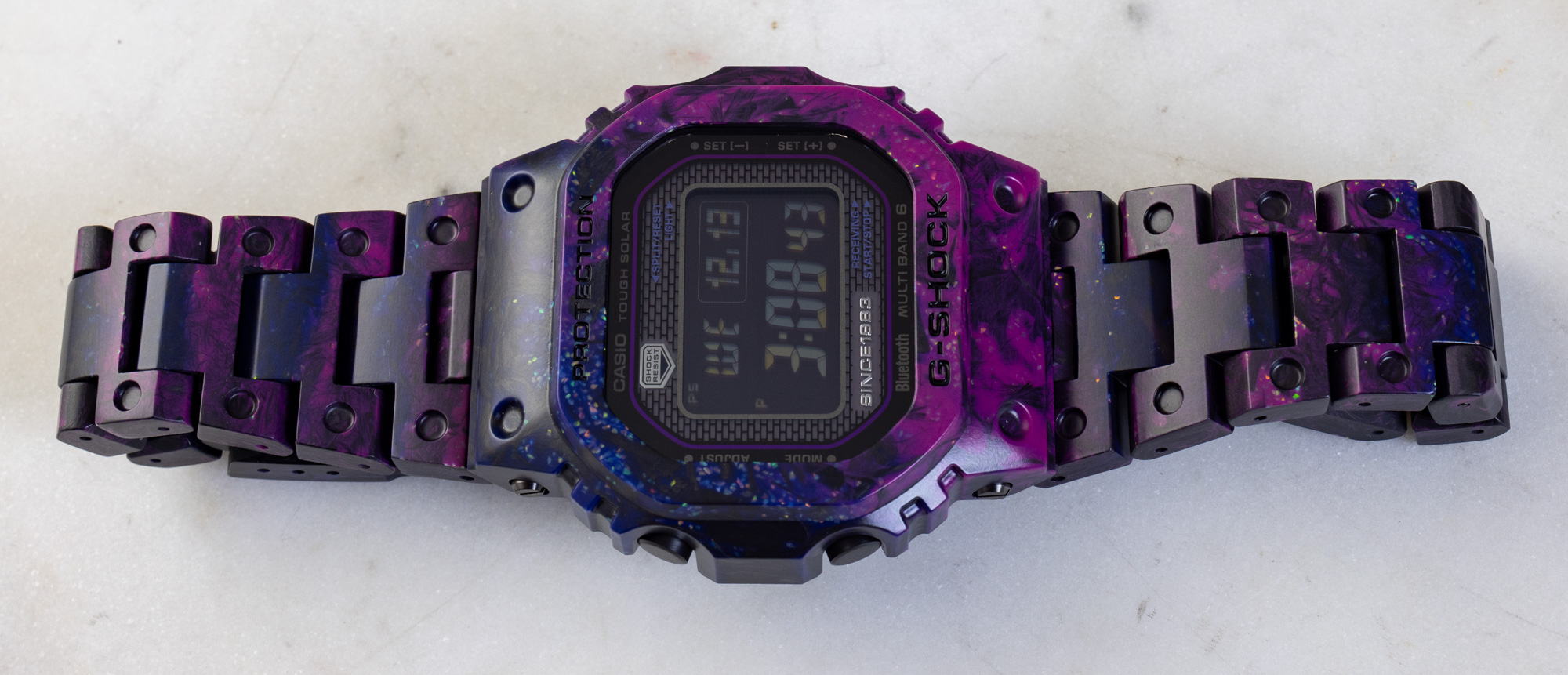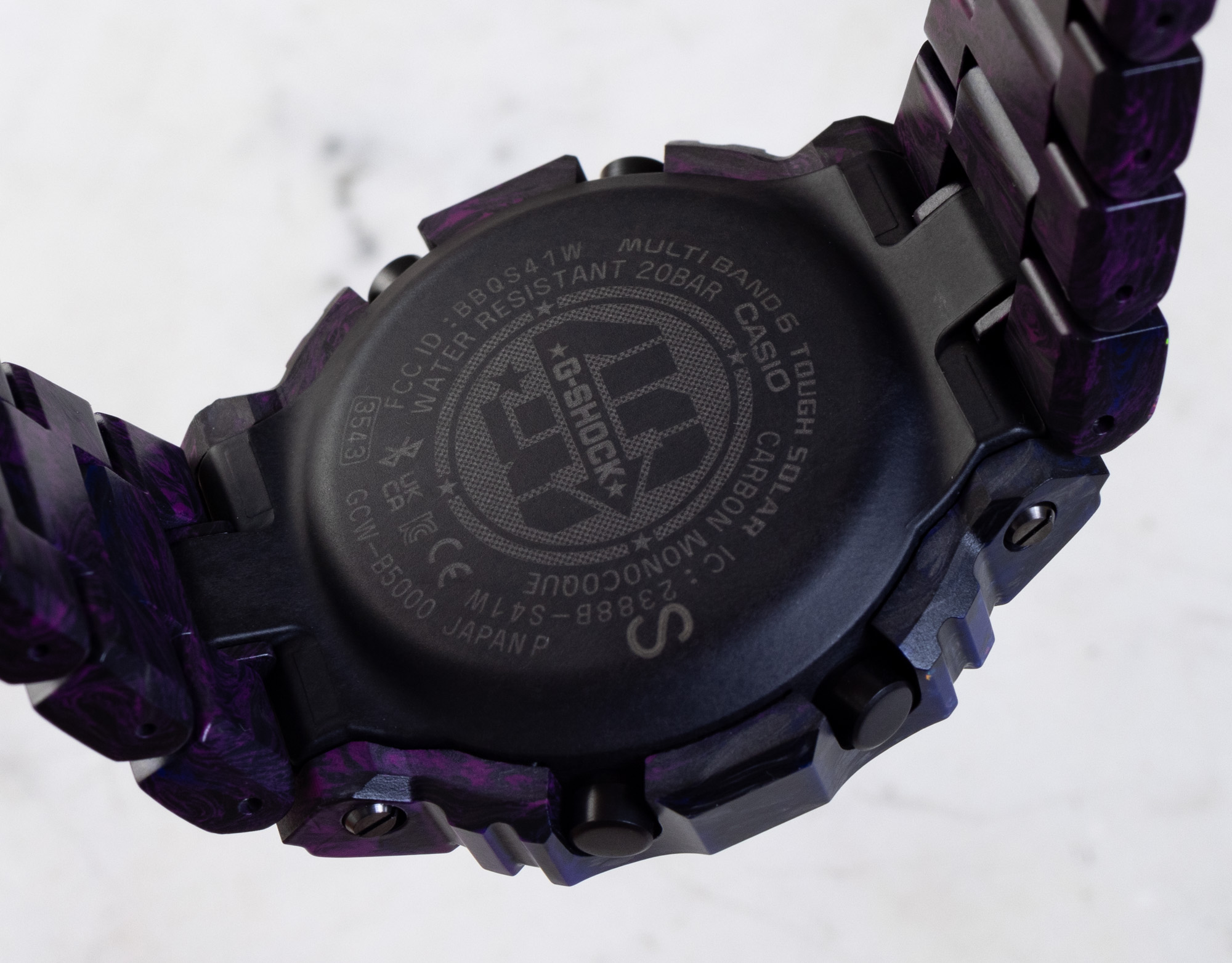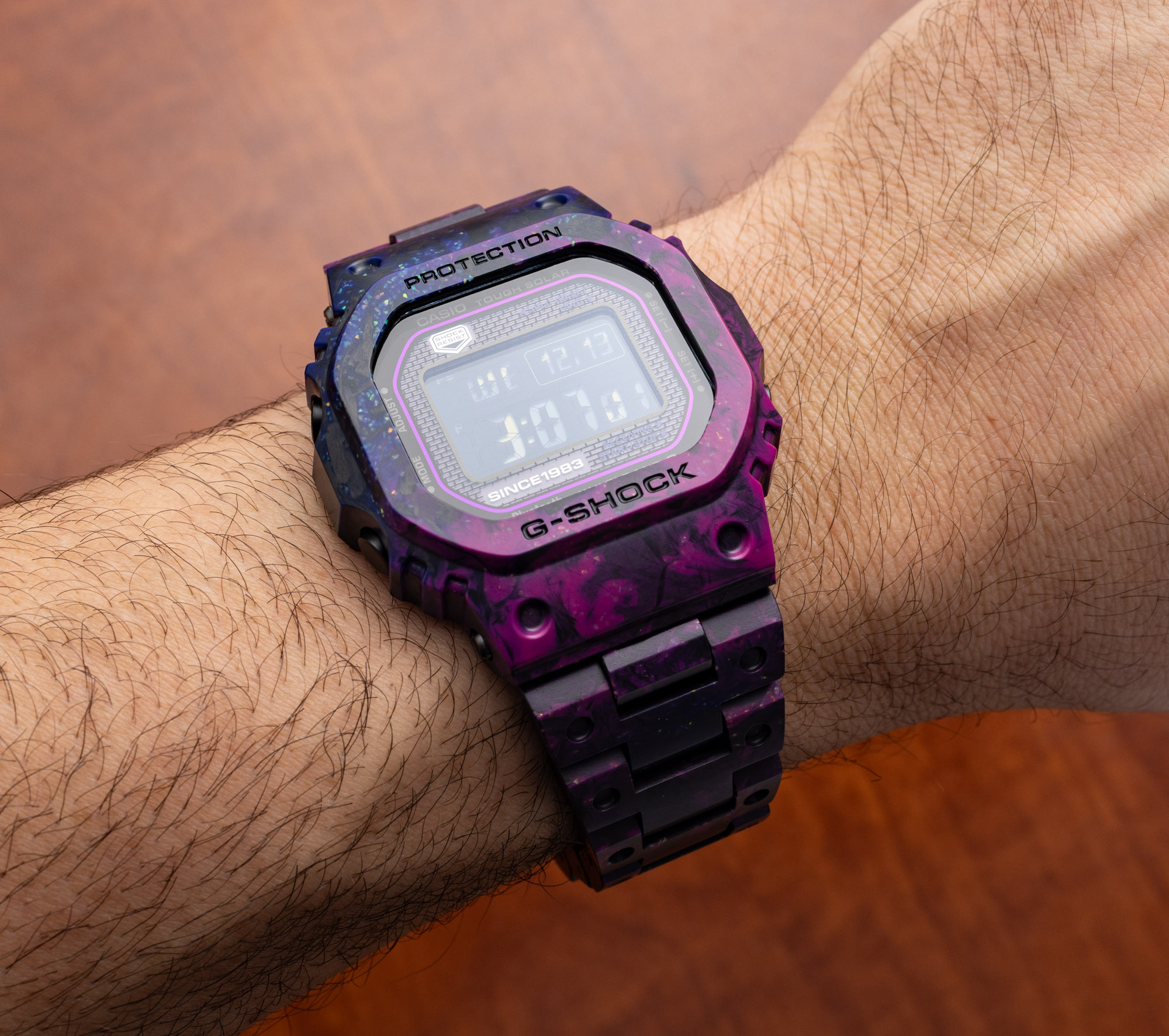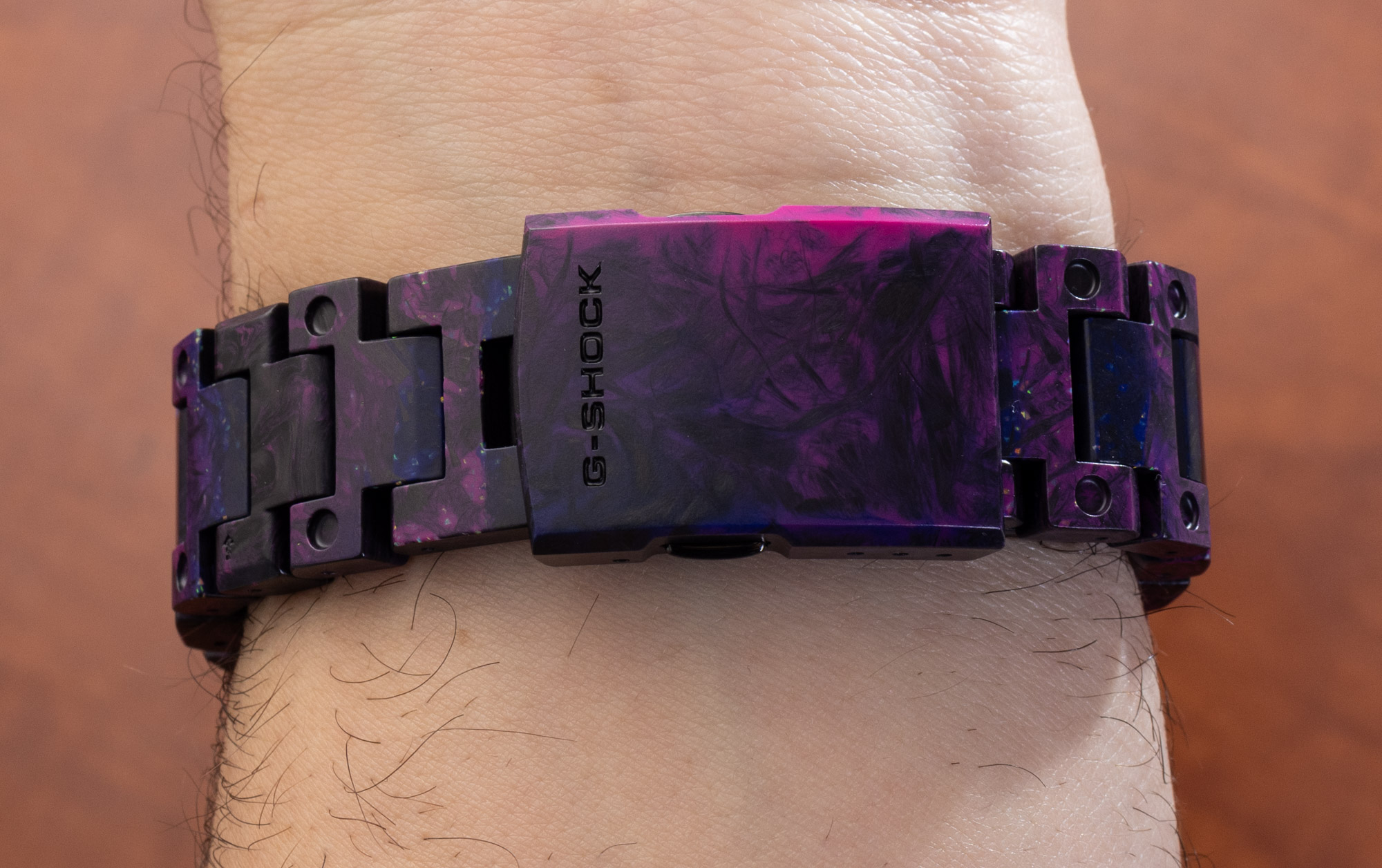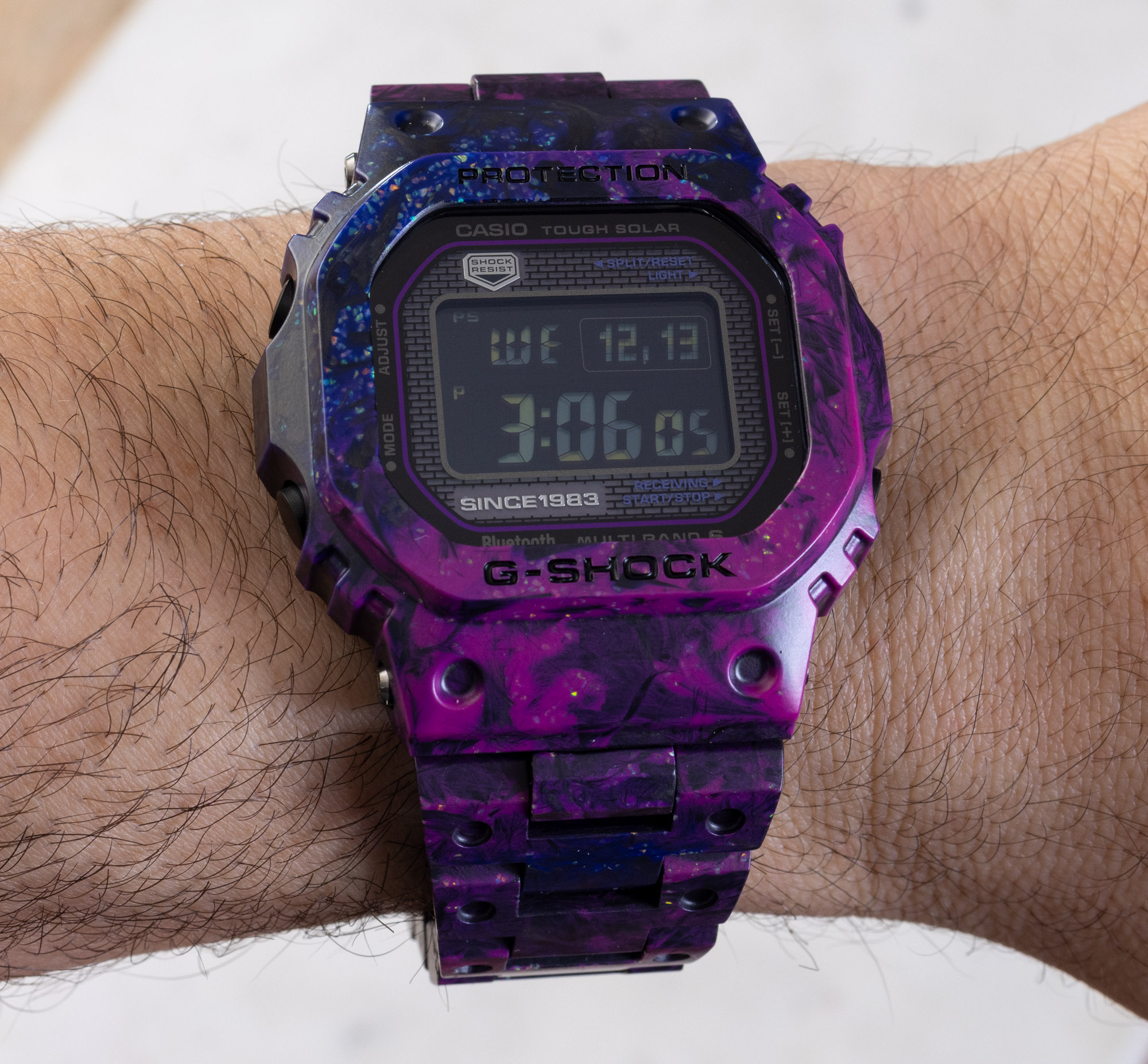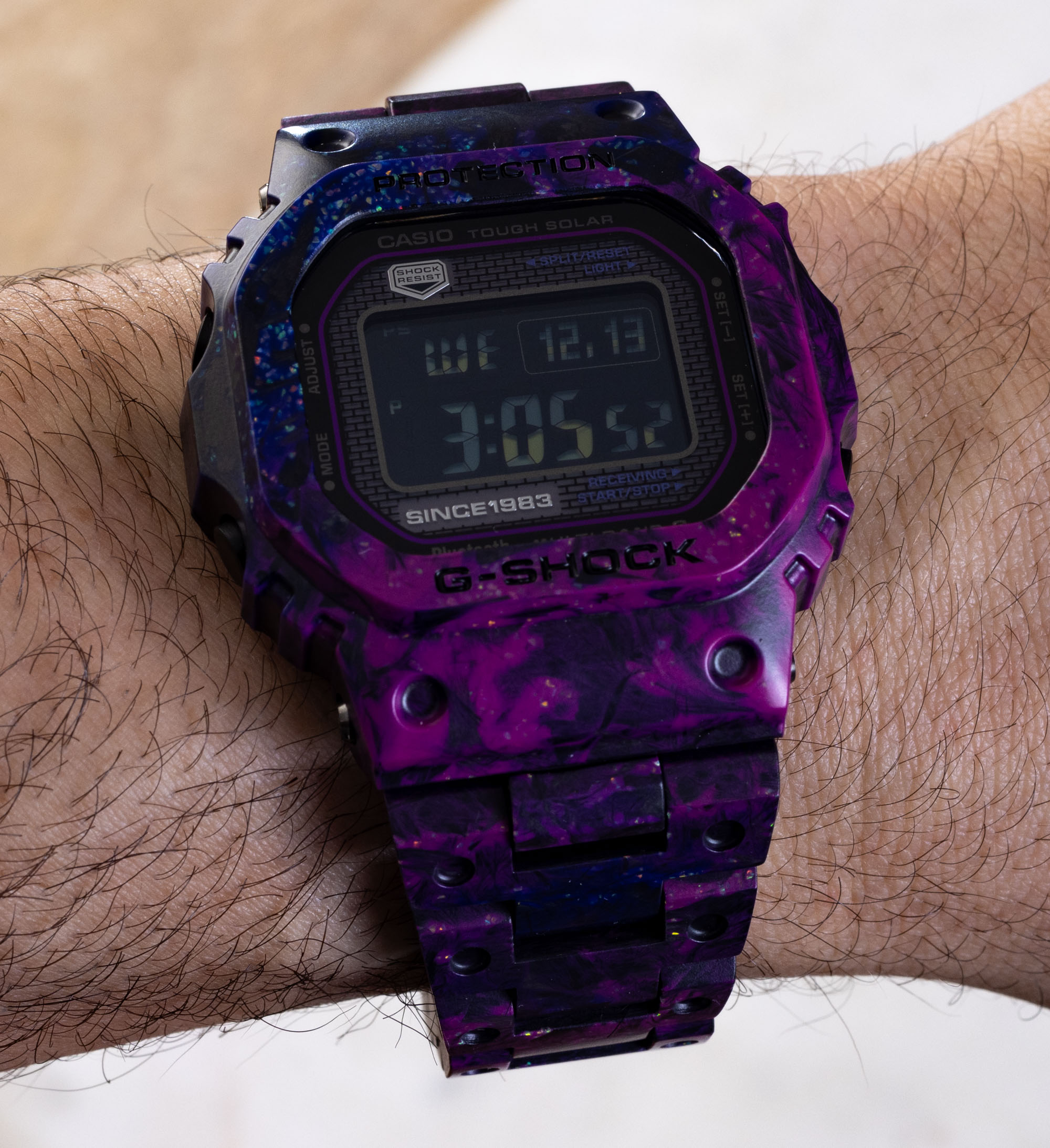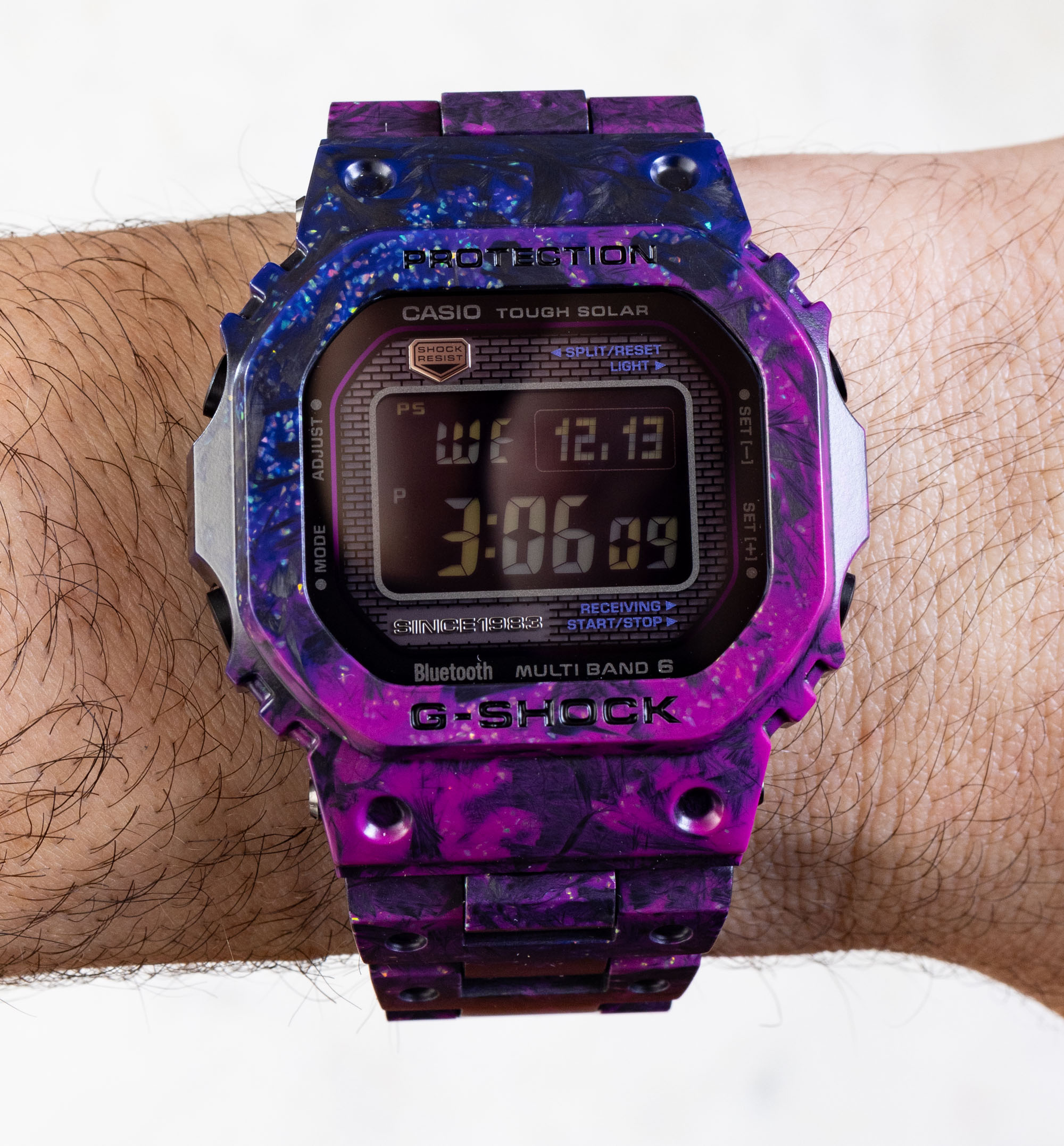
One of the most exciting new Casio watches released as part of the 40th anniversary (1983-2023) of the G-Shock is a version of the metal GMWB5000 known as the GCWB5000 in carbon. Casio launched the GCWB5000 in two forms including the black carbon GCWB5000UN-1, and this galactic purple reference GCWB5000UN-6 version, which has shades ranging from magenta to violet. This higher-end-priced Casio G-Shock represents a new visual aesthetic as well as performance due to its very light weight. Let’s compare the numbers. The all-metal Casio G-Shock GCWB5000 has a reported weight of 167 grams, and this carbon version of the same profile weighs only 65 grams. Do you feel that on the wrist? You bet! Or rather, you don’t feel it.
The G-Shock GCWB5000 is Casio’s best entrant so far into the ultralight lifestyle watch race. Casio has always prioritized weight reduction in its G-Shock watch design, but mainly for specific sports purposes. In recent years, there has been a push to make some of the world’s most high-end luxury watches very lightweight. We can thank brands like Richard Mille for that. To create weight-saving strategies, watchmakers have increasingly relied on strong, albeit non-metallic materials. Carbon, in its many forms, is often the chosen candidate. Some years ago it was practically an anathema to suggest a luxury watch could weigh very little as bulk and density were prized. This was mostly a result of the mentality that good watches were made from precious metals (like gold), and that precious metals weighed more than common metals. The materials used by the watch industry over the last few decades have changed so much that this traditional ability to measure the quality of a watch by weighing it in your hands has dramatically changed. While the watch market still has some high-end, very heavy watches, a new generation of enthusiasts is starting to see value in watches that are featherweights.
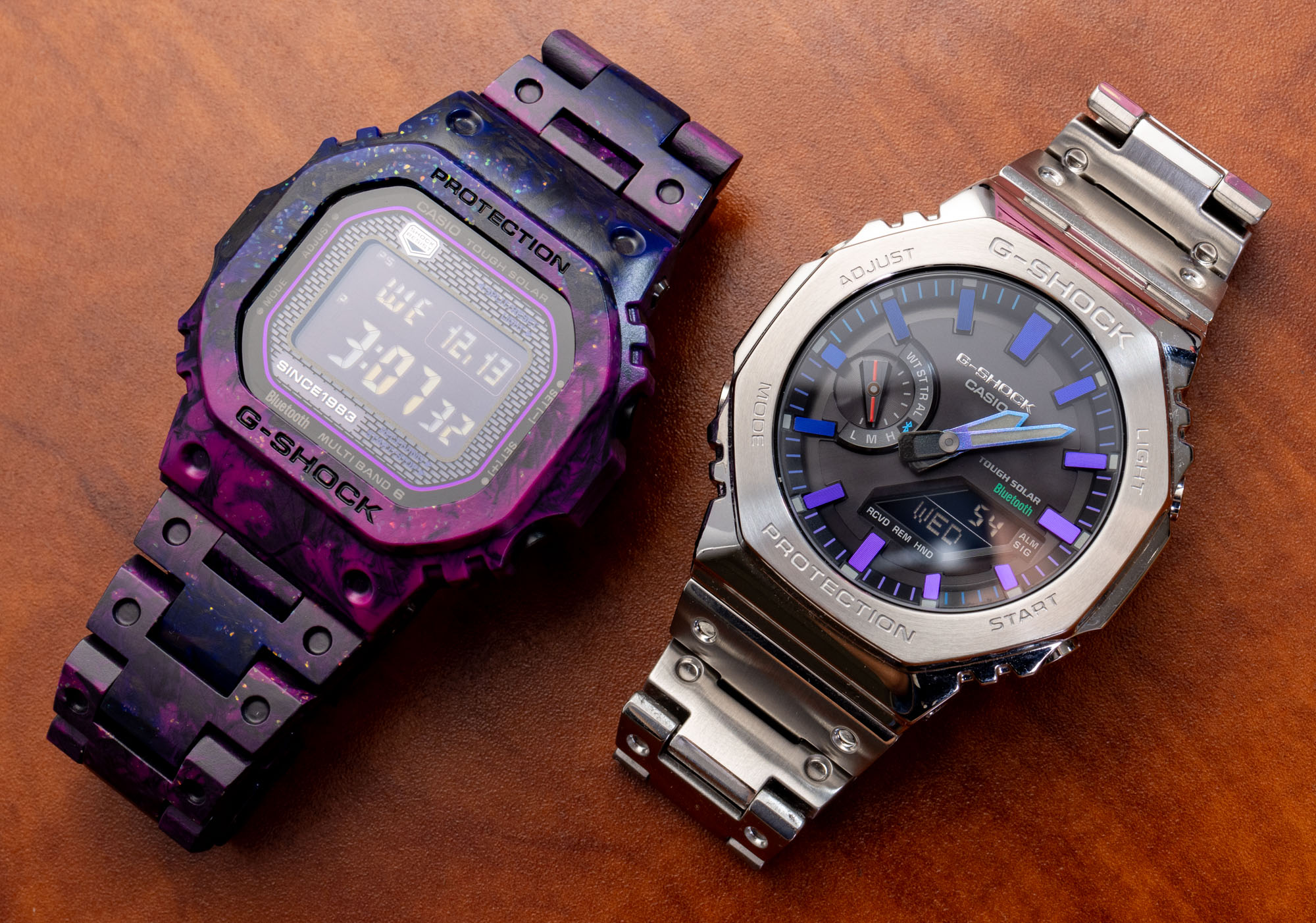
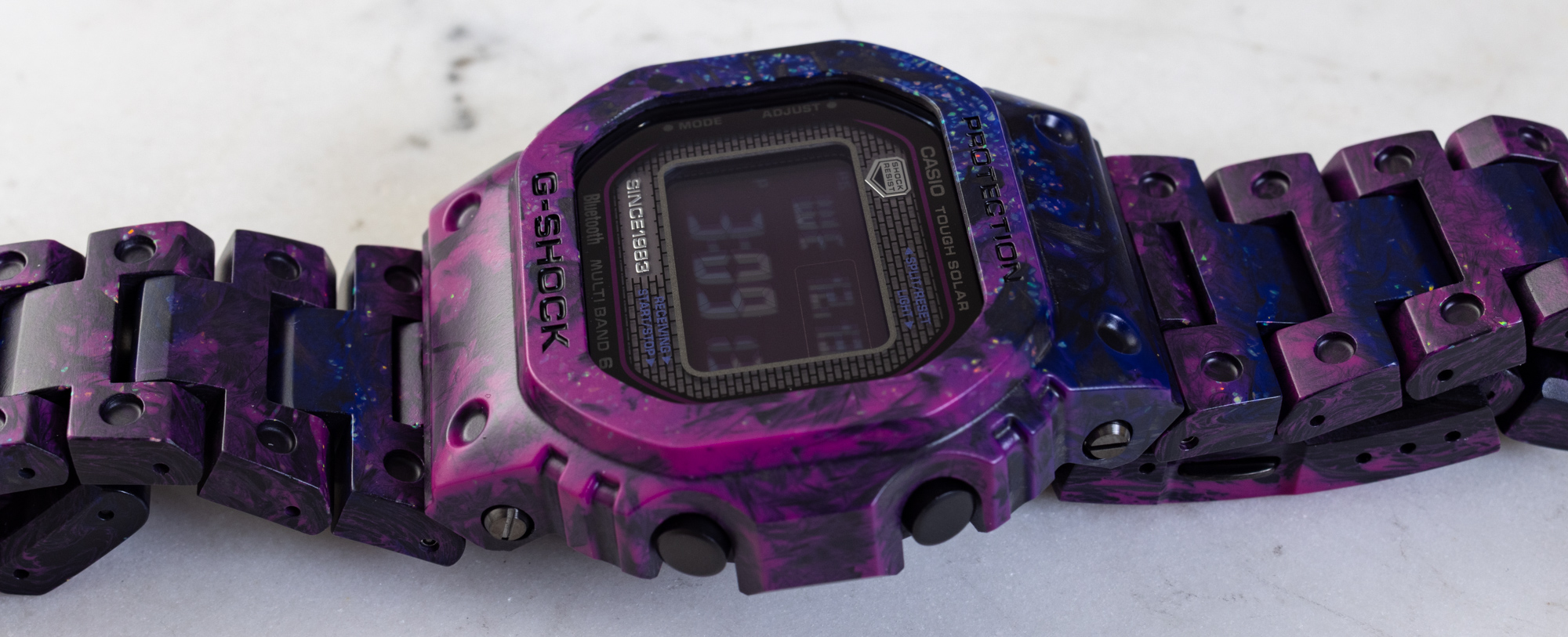
The trick is to not make the watch too small as a result. People still like visually assertive timepieces and that means viewing space. Therefore, a small and light watch doesn’t really satisfy current tastes. Rather, people are looking for showy watches (either in terms of size, materials, or overall design), but those that are also comfortable and sporty on the wrist. That’s where a watch like the G-Shock GCWB5000 succeeds. Casio replaced as much of the metal as possible with lightweight carbon elements. This even appears to include the bars in the links that hold them together, which in this watch appear to be something like graphene and not steel. Casio claims that three different carbon materials are used in the case, bezel, and bracelet.
Once you work with carbon, you have a variety of color and aesthetic options available to you. Carbon fiber was more limited in its visual properties, but the newer crop of layered or forged carbon construction processes, allow for companies to go quite wild with colors and texture. Casio mostly uses a proprietary forged carbon blend for the GCWB5000UN cases and bracelets. Here they show off some of the cosmetic opportunities available with this process by using a blend of purple colors, with some shiny elements in it. In the all-black version, the forged carbon has a more subtle, albeit still organic, surface texture to it. The caseback of the watch is produced from a monocoque segment which is carbon fibers blended with resin. Layered carbon is used for the folding pieces in the deployant clasp as part of the bracelet. The forged carbon is really the hero material since it can be injection molded into small, precise parts. With that said, as evidenced by the thickness of the bracelet links, the GCWB5000’s forged carbon bracelet has links that are appreciably thicker (albeit much lighter) than the steel metal bracelet links on the GMWB5000 models.
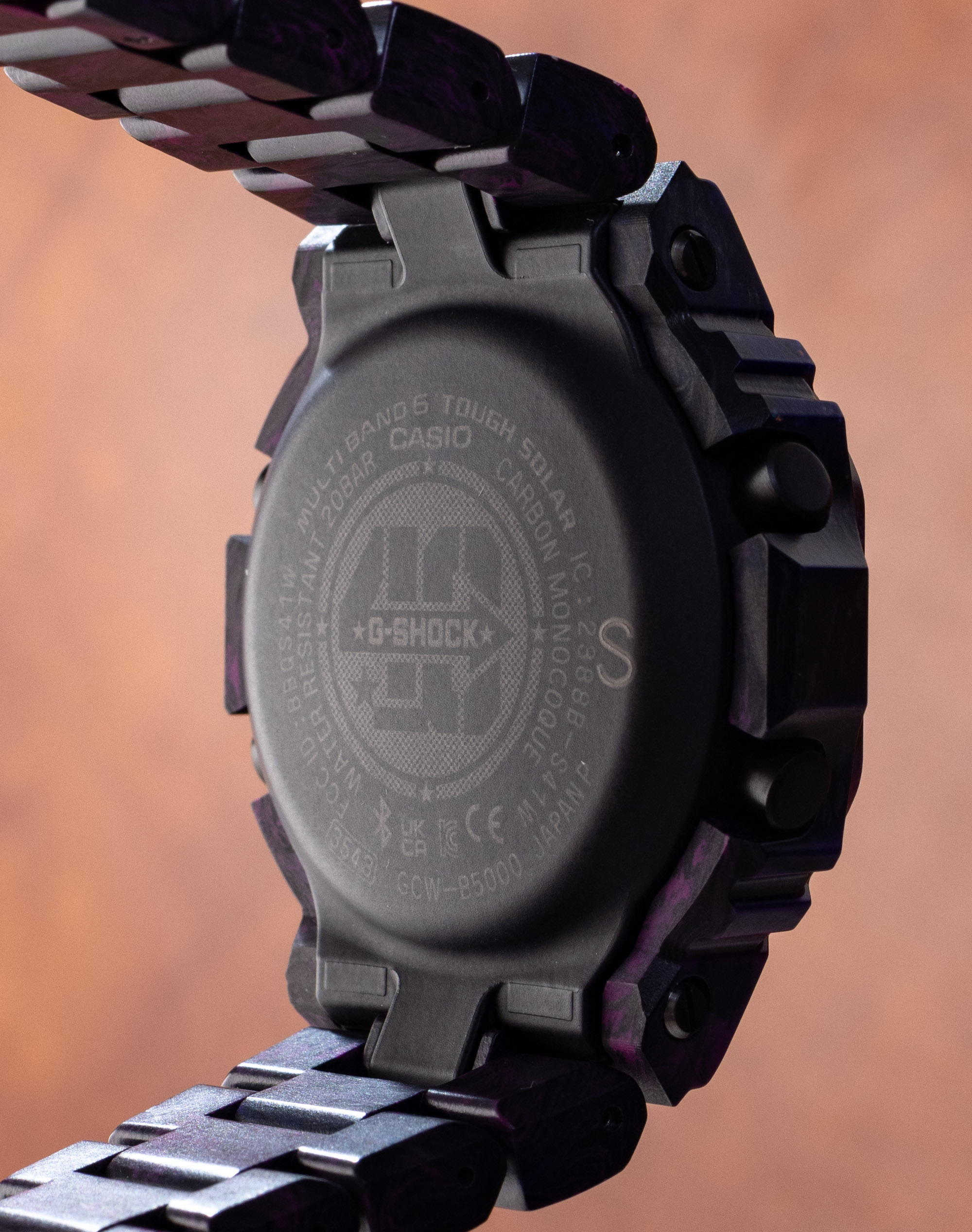
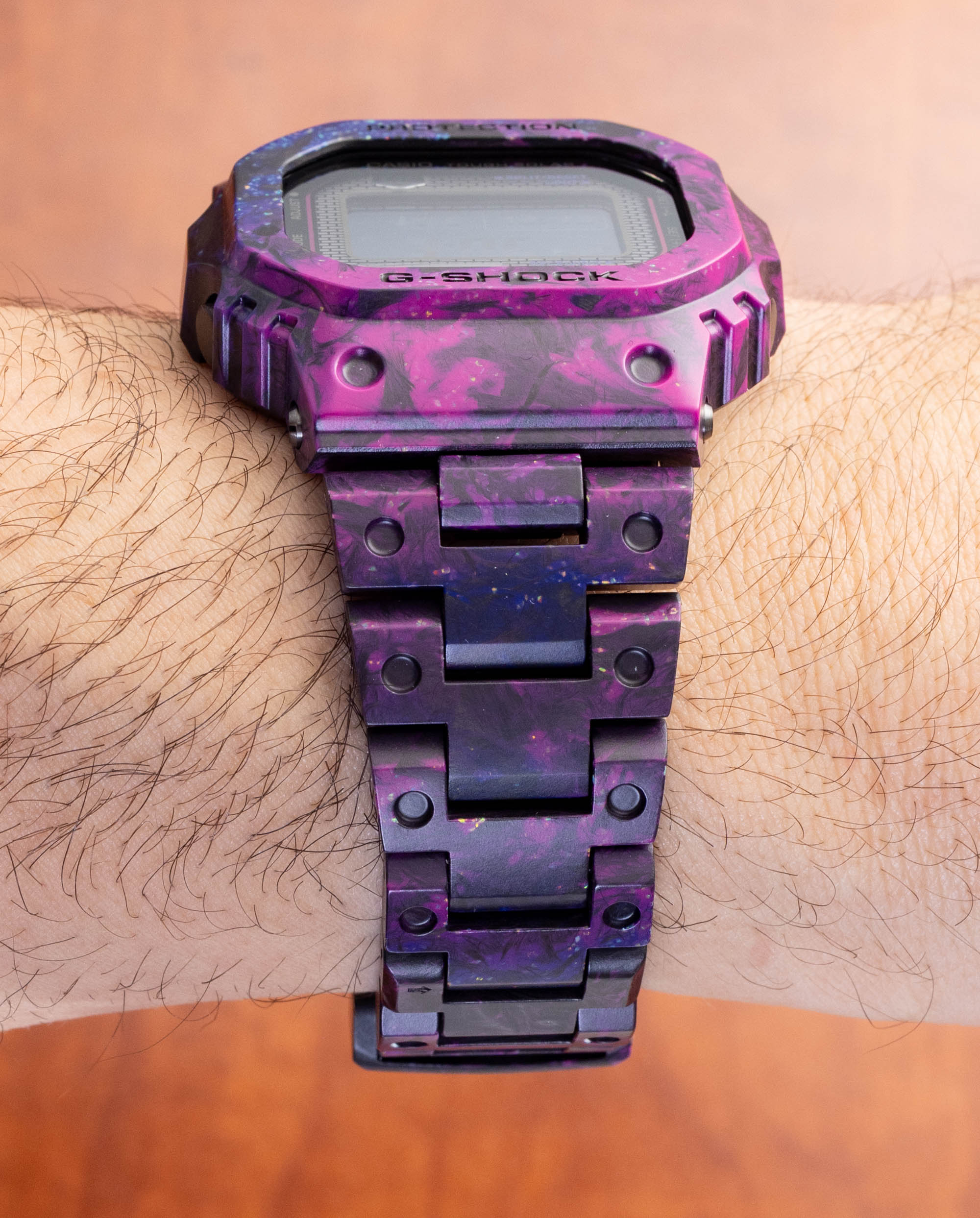
It was only a matter of time for Casio to use carbon for G-Shock watch cases. I recall back in 2017 reviewing an interesting aftermarket G-Shock watch by Alvarae that replaced the resin case with a forged carbon one. What was immediately apparent was that the texturing opportunities with carbon materials made them especially appealing. Carbon is light, strong, and can be made into a series of increasingly precise shapes making it well-suited as a wristwatch case and bracelet material. But is carbon a luxury material? That’s the interesting question and where the timepiece market will have to work the hardest. The fact remains that some inexpensive watches on the market have carbon cases, but so do million-dollar-plus ones. More so, the price of the GCWB5000 is sure to make many G-Shock fans wince, if only because there is little built-in understanding amongst the watch lover community as to what carbon is worth or how to value it.
My own interpretation of carbon materials science is that none of these exotic carbon blends are themselves per se precious materials. They all mostly use inexpensive base materials that are far outclassed by the precious nature of say 18k gold. With that said, carbon becomes more interesting in the unique formulation of the resulting blend and the manufacturing technique utilized to create the final parts. These factors determine how visually pleasing the surface textures of the carbon are as well as its overall rigidity and ability to withstand wear and tear. So how does Casio’s forged carbon age over time? I really don’t yet. I’d have to wear this watch for a while to know. The overall organic blend of colors might actually hide blemishes pretty well. I don’t think carbon is as scratch-resistant as other materials, but it also isn’t particularly fragile. For enthusiasts, the value of carbon watch case material is in how lightweight it is, and how it affords designers huge variety in terms of colors and textures. Casio made sure to choose the right types of carbon for the G-Shock GCWB5000UN-6, with a resulting design that might be polarizing but is undeniably cohesive.

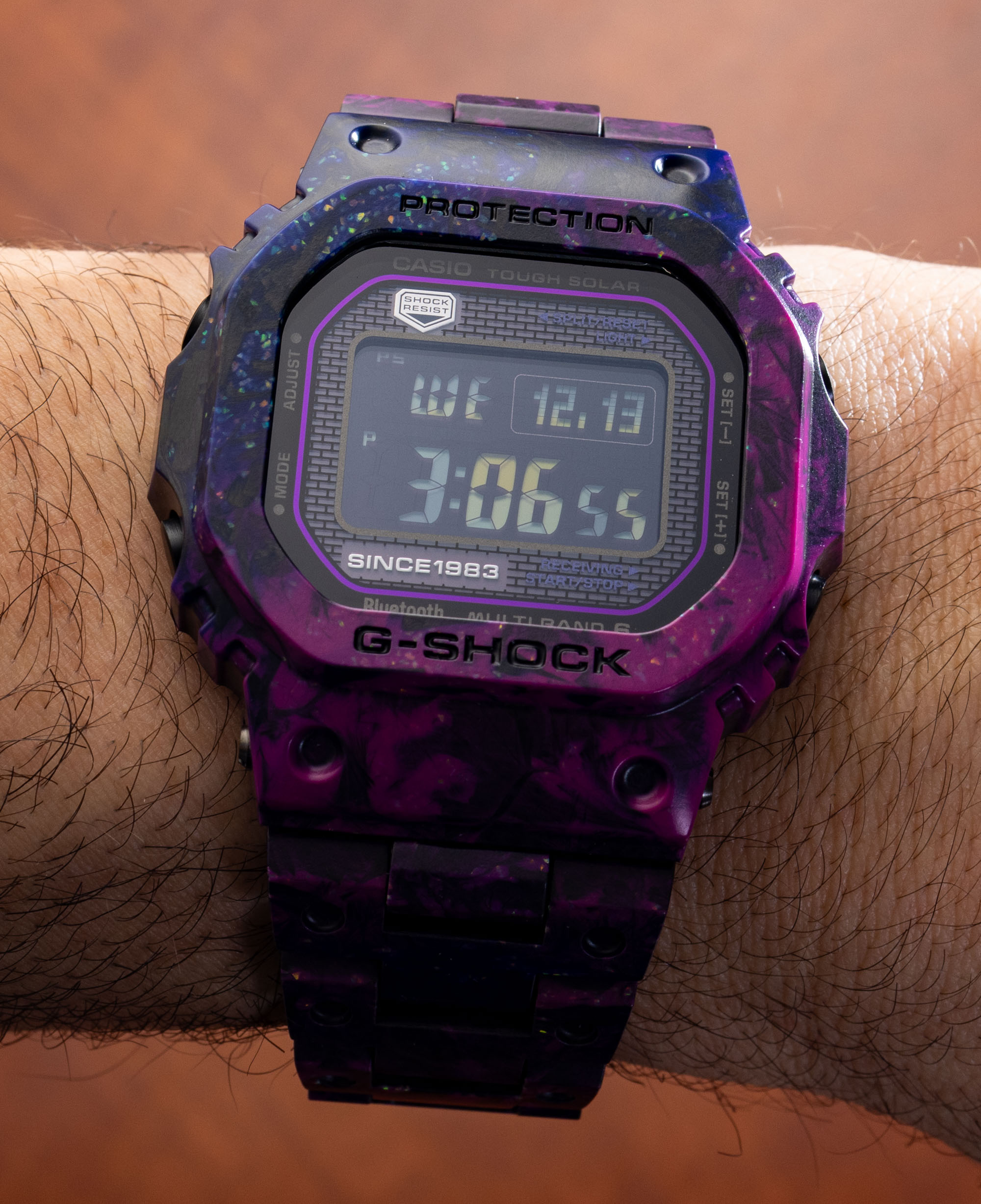
The GCWB5000 watch case measures 45mm wide, 14.5mm thick, and with a 49.1mm lug-to-lug distance. The case is water-resistant to 200 meters and has an AR-coated sapphire crystal over the negative display LCD screen. Inside the watch is one of Casio’s modern Bluetooth-connected modules which also has Tough Solar charging. The dial design is like Casio classics, but with small differences to help commemorate the 40th anniversary of G-Shock including the “Since 1983” label. We also see magenta and violet accent colors to match the case and bracelet’s carbon material.
Since the GCWB5000s are part of Casio’s more elite group of G-Shock watches, they are all assembled in Japan. They also come with special packaging related to the G-Shock 40th anniversary celebration. Will there be more Carbon Edition G-Shock watches? Most certainly. I anticipate that Casio will release watches that mix resin straps with carbon cases, similar to what the company has done by mixing metal cases with resin straps. Carbon will enjoy allure because of its strong structure and its light weight, but the biggest appeal to consumers will likely be the color-blended cases and visual spectacle associated with the relative novelty of these types of watches. As a timepiece enthusiast, I like the idea of a highly durable watch that you can barely feel on the wrist (even more so than most G-Shock watches). I also like the artistry available with the forged carbon materials. I am not sure that all enthusiasts will want to spend this much for the experience, but at the least, Casio has yet another ultra-cool, and exclusive watch for collectors to swoon over (“Is that the Carbon Edition? Let me feel it!”). The price for the Casio G-Shock 40th Anniversary Carbon Edition GCWB5000UN-6 is $2,000 USD. Learn more at the Casio website.

